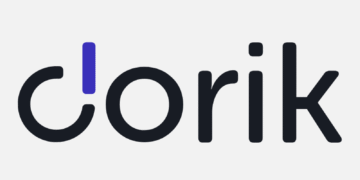Are you ready to start creating your website? Whether it’s a blog, portfolio, or online store, the process on how to create a website can feel overwhelming. But don’t worry.
With the right guidance, you can build a stunning website. It will truly represent your brand and engage your audience.
In this guide, we will walk you through the steps to create a successful website. From choosing a website builder to optimizing for SEO, we’ve got you covered.
Let’s get started and bring your website to life!
Choose a Domain Name
Check Domain Availability
When you build a website, check if your desired domain name is available. This is crucial to avoid using a name already taken. Also, look at similar or alternative options in case your first choice is not free. This step establishes your online presence and sets a unique identity for your business or brand. By verifying domain availability, you ensure your site connects well with the target audience and represents your online presence effectively.
Select Domain Registrar
When choosing a domain registrar, consider the cost of the domain name and web hosting plan.
Beginners often want a step-by-step guide for creating a website. The domain name is crucial because it should match the website’s content and purpose to attract visitors.
Make sure the registrar is reliable to build a strong website foundation. Look for a registrar that offers flexible website building tools and customization options.
Don’t forget about security features like SSL certificates and customer service. Check the provider’s track record and user reviews to avoid mistakes.
Link Google Search Console to monitor website traffic and performance. This helps understand visitor behavior and improve content visibility.
Selecting a domain registrar that fits the website’s goals and provides reliable service is essential for a successful online presence.
Select a Hosting Provider
Choose Web Hosting Plan
When setting up a website, it’s important to know the type of website you want and the content you’ll share.
Think about how much storage and bandwidth you need for a smooth experience for your visitors.
Consider any special features like SSL certificates or email accounts for added security and functionality.
Choose a web host that offers flexibility and reliability.
You can create your website on platforms like WordPress, customize its look, and add a logo for a good first impression.
Follow a guide to avoid mistakes, track your website using tools like Google Search Console, and use SEO to reach more readers.
Pick a web host that supports beginners, offers assistance, and ensures fast and reliable service.
Create Website Structure
Define Pages and Categories
Defining pages and categories on a website is important. It helps organize content and guide visitors effectively.
By grouping content into logical sections like menus and submenus, users can navigate easily. This improves the user experience by making it easy to find relevant information.
For instance, a clear menu highlighting key pages like the homepage, contact section, and blog can simplify navigation.
Organizing pages and categories creates a visual hierarchy, guiding visitors through the website seamlessly. Tools like WordPress’s block editor can help in creating visually appealing pages with clear headings and subheadings.
A user-friendly menu layout enhances website usability. Adding a logo and favicon reinforces the website’s brand identity, making it more recognizable.
Linking the website with Google Search Console offers insights into traffic and performance. This allows for continuous improvements based on visitor behavior.
Plan Structure and Navigation
To make it easy for users to navigate the website, we can do a few things:
- Organize menus and categories effectively: This means structuring the website plan so that users can easily find what they’re looking for.
- Create a clear menu hierarchy: This helps users know where to go to find specific information.
- Use descriptive names for pages: This ensures that users understand what each page is about.
- Add breadcrumbs.– These show users where they are on the website and help them navigate back.
- Organize key pages logically: The homepage, shop/gallery, About page, contact section, blog, membership area, FAQ page, testimonials page, and online booking system should be easy to find.
- Consider using WordPress: Its block editor and customizable themes can make the website visually appealing and easy to navigate.
- Include a logo, icon, or favicon: This helps visitors remember the website.
- Link the website with Google Search Console: This provides insights into traffic and performance and helps identify and fix mistakes.
- Choose reliable web hosting like Hostinger: This ensures the website is fast, reliable, and flexible for future needs.
Design Your Website
Add Logo and Favicon
Selecting the right logo for your website is crucial. A logo represents your brand visually at the top of every page. It should be appealing, memorable, and reflective of your brand.
Choosing an icon, called a favicon, is important too. The favicon appears in the browser tab and bookmarks, helping visitors recognize your site easily.
Ensure that both the logo and favicon match your website’s theme, content, and audience. This creates a professional online presence.
Remember to consider size requirements for the logo and favicon to display well on different devices.
Integrating the logo and favicon into your website’s design and navigation will enhance the user experience visually.
Develop Content
Write and Publish Content
To effectively write and publish content on a website:
- Ensure the content is relevant to the website’s purpose and target audience.
- Customize templates based on brand elements like colors, fonts, and a logo for a cohesive visual experience.
- Create important pages such as the homepage, blog, and contact section for enhanced site structure and accessibility.
- Utilize tools like WordPress and the block editor for simplified content creation and customization.
Follow a step-by-step guide for website building:
- Ensure a well-structured site with optimized navigation.
- Check domain name availability and select a reliable web host with speed, reliability, and flexibility as important foundational steps.
To engage visitors:
- Incorporate elements like a favicon and user-friendly navigation menu.
- Integrate Google Search Console for monitoring traffic and identifying common mistakes to improve website performance.
Implementing SEO strategies for global and local visibility, as well as exploring monetization options through reader-supported or commission-based services, can transform a website into a successful online business.
Optimize for SEO
Research Keywords
Keyword research tools like Google Keyword Planner, SEMrush, and Ahrefs help find the right words for a website. They show search volumes, competition, and related terms useful for content.
Long-tail keywords, specific and targeted phrases, fit well by focusing on niche topics or audience needs.
To pick the best keywords, think about search volume, competition, relevance, and user intent.
Matching keywords with website goals boosts attracting the right traffic and engaging visitors.
Optimize Meta Tags
Optimizing meta tags for a website involves considering key elements:
- Name of the website
- Domain name
- Web host
- Web hosting plan
When strategically used, meta tags can improve SEO by:
- Accurately reflecting content
- Attracting visitors
- Enhancing visibility on search engines
Customizing meta tags with:
- Relevant keywords
- Unique logo
- Favicon
This can create a visually appealing and user-friendly website structure.
Setting up meta tags step-by-step using tools like the WordPress block editor can enhance flexibility and functionality for beginners.
Proper navigation menus, including important pages, and linking with Google Search Console can help monitor traffic and performance, reducing common mistakes.
By following this approach, website owners can optimize their site for:
- Speed
- Reliability
- Global and local SEO rules
Seeking free help from reader-supported services or commission-based monetization can boost online business by:
- Adhering to service guidelines
- Maximizing opportunities for growth.
Test Your Website
Check Links and Functionality
When building a website, make sure all internal and external links work correctly for a smooth user experience.
Testing each link well ensures visitors can navigate without broken links.
Also, rigorously test interactive features like forms, buttons, and media players for accuracy.
By checking responsiveness before launch, fix any issues and prevent common mistakes that might affect user satisfaction.
Tools like Google Search Console help monitor traffic and performance to meet global standards for better visibility and user engagement.
Optimize for Mobile Devices
Optimizing a website for mobile devices involves making sure it’s responsive and user-friendly on smartphones and tablets. Techniques like image optimization, minifying CSS and JavaScript files, and enabling browser caching can make the site load faster and be more responsive on mobile devices.
- Design elements– such as easy-to-read fonts, clear CTAs, and simple navigation menus should be prioritized to enhance user engagement and increase conversion rates.
- Tools– like Google Search Console can help monitor mobile traffic, identify errors, and get free advice on mobile optimization.
- Considering the –costs– of mobile optimization is important for establishing a strong online presence.
- Following a step-by-step guide and using resources from reliable web hosting providers can help create a visually pleasing and functional mobile website that complies with global and local SEO guidelines.
- Monitoring mobile performance and gathering feedback from visitors can further improve the mobile user experience and support opportunities for monetization.
Launch Your Website
To check if a domain name is available for your website, start by looking into domain name registrars like GoDaddy, Namecheap, or Domain.com. These platforms offer tools to check if your preferred domain name is free. To have more options, consider looking at variations or different extensions of the name.
Choosing the right web hosting plan is important for a successful website launch. Factors to consider include speed, reliability, customer service, and available features from different hosting providers. Beginners can find helpful guides and comparison tools online to understand their options better. Pick a web host that can meet your website requirements, such as WordPress compatibility, an easy-to-use dashboard, and attractive customizable themes for a visually appealing site.
Before launching the website, optimizing it for SEO is vital for visibility and success. Conduct keyword research, optimize website content, create a user-friendly site structure, and set up crucial pages like Contact, About, blog, and service pages. Using Google Search Console to monitor website traffic helps track performance and identify any necessary corrections for a successful online presence.
FAQs
Choose a domain name and hosting provider.
Design and layout your website using a website builder like WordPress
Add content including text, images, and videos.
Optimize for SEO by including keywords.
Test your website on different devices before publishing.
No, you don’t need to know coding to create a website. You can use website builders which have drag-and-drop interfaces that require no coding knowledge.
A domain name is the address of your website (e.g., www.example.com), while web hosting is the service that stores and serves your website files to visitors. They are separate services but work together to make your website accessible on the internet.
To make your website mobile-friendly, use responsive design, optimize images and videos for mobile loading speeds, prioritize simple navigation, and implement large buttons for easy tapping. Test your site on various devices and browsers to ensure compatibility.
Some best practices for website design include creating a clear and intuitive navigation menu, ensuring fast loading times, optimizing for mobile devices, and using high-quality images and engaging content.


